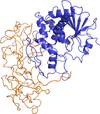Everything you need to know about ricin poison
Ricin is one of the most poisonous substances on Earth and it's scarily easy to make.

Update: On October 2, 2018, news outlets reported that envelopes suspected of containing ricin had been found in the Pentagon’s Central Processing Center. The FBI is currently testing the suspicious parcels. What follows is an article originally published in April 2013, when envelopes addressed to Senator Roger Wicker and President Barack Obama were found to contain a white granular substance that was identified as ricin. While this latest incident is a breaking news story, the facts about ricin haven’t changed. Read on.
How poisonous is it?
Oh, man. Very. It’s dangerous in just about any way it gets into your system, though ingesting (eating) it is about the least dangerous way. Injecting or inhaling requires about a thousand times less ricin to kill a human than ingesting, and that’s a very small amount indeed. An average adult needs only 1.78 mg of ricin injected or inhaled to die; that’s about the size of a few grains of table salt—which ricin resembles visually.
How does it work?
Ricin, a toxic protein, infects cells, blocking their ability to synthesize their own protein. Without cells making protein, key functions in the body shut down; even in survivors, permanent organ damage is often the result of ricin poisoning. It’s a highly unpleasant way to be poisoned: within six hours, according to the Center for Disease Control, victims who have ingested ricin will feel gastrointestinal effects like severe vomiting and diarrhea, which can lead to serious dehydration. Then the ricin infects the cells of the vital gastrointestinal organs as they pass through the body, leading to the failure of the kidneys, liver, and pancreas.
Inhalation of ricin has a different effect since the ricin proteins aren’t interacting with the same parts of the body. Instead of gastrointestinal problems, you’ll develop a vicious, bloody cough, your lungs will fill with fluid, and eventually, you’ll lose your ability to breathe, causing death. Injection, too, is different, depending on where you’ve been injected, but will generally result in vomiting and flu-like symptoms, swelling around the place of injection, and eventually, organ failure as your circulatory system passes the protein around the body. Death from inhalation or injection usually occurs about three to five miserable, agonizing days after contact.
Interestingly, there aren’t any immediate symptoms, and indeed there can be a significant delay before symptoms show themselves, up to a day or two.
Exposure on the skin is generally not fatal, though it may cause a reaction that can range from irritation to blistering.
That sounds… horrible. Is there an antidote, at least?
No. The U.S. and U.K. governments have been working on an antidote for decades—here’s a nice article describing the progression of one such antidote—but there isn’t one available to the public. The CDC’s website states bluntly that no antidote exists. There are some steps you can take if you get to a hospital immediately; for ingestion, a stomach pump can sometimes prevent the ricin from reaching the rest of the gastrointestinal system at its full force. But… that’s about it, really.
How does it stack up against other poisons?
Well, that depends on what your aim is. Ricin is much easier to produce than other popular biological weapons like botulinum, sarin, and anthrax, but it is not as potent as any of those, which limits its effectiveness as a weapon. It also is not very long-lived; the protein can age and become inactive fairly quickly compared to, say, anthrax, which can remain dangerous for decades. There were experiments back around World War I attempting to make wide-scale ricin weapons, packaging it into bombs and coating bullets in it, but these proved not particularly effective and also violate the Hague Convention’s agreements on war crimes, so the U.S. discarded ricin.
It’s much more effective, weapon-wise, as a close-contact, small-target weapon—by injecting, as with Georgi Markov, or by putting small particles into an aerosol spray and blasting a target. It’s also not contagious, which limits its effectiveness as a tool of biological warfare. But it’s considered highly dangerous partly because it’s still outrageously toxic and partly because it takes no great skill to produce.
So it’s not hard to make?
Well… no. Like, not at all. It’s made from the byproduct of the castor oil manufacturing process. You take the “mash” of the castor oil seeds, which contain around 5-10 percent ricin, and perform a process called chromatography. Chromatography is a blanket term for a set of techniques used to separate mixtures, usually by dissolving in liquid or gas. The U.S. government has done its best to eradicate recipes for ricin from the internet, sort of; a patent was filed back in 1962 for ricin extraction, and the Patent Office took it off the publicly available server in 2004 for safety reasons. That said, the recipe is super easy to find; here at the PopSci offices, I’m blocked from listening to Rdio on my work computer, but I found a recipe to make an outrageously deadly poison in about a minute.
The techniques involved are undergraduate-level chemistry, creating a slurry with the castor bean mash and filtering with water and then a few easily-found substances like hydrochloric acid.
It comes from castor beans?
Ricin is a highly toxic protein that’s extracted from the seed of the castor plant, often called a “castor bean” or “castor oil bean,” despite not technically being a bean. The castor plant is extremely common; it’s used as an ornamental plant throughout the western world, prized for its ability to grow basically anywhere as well as its pretty, spiky leaves and weird spiny fruits. It’s also an important crop; the seeds are full of oil, and castor oil is used for lots of legitimate purposes. It’s a common laxative, for one thing, and since it’s more resistant to high temperatures than other kinds of vegetable oils, it’s a nice alternative to petroleum oil in engines.
Wait, but you can eat it? So how is this a poison?
Ah, yes. Castor oil is perfectly safe, according to the FDA and your grandma, but ricin is not castor oil. Castor seeds are still poisonous; this study says that a lethal dose of castor seeds for adults is about four to eight seeds. But the oil itself does not contain ricin; the ricin protein is left behind in the “castor bean mash” after the oil is extracted from the seed. Poisoning from eating the seed itself is rare.
Have there been cases of ricin poisoning in the past?
You mean, beyond the several times it’s been featured as a major plot point in Breaking Bad? Sure! The most famous is probably the assassination of Georgi Markov in 1978. Markov was a Bulgarian novelist, playwright, journalist, and dissident, and was murdered by the Bulgarian secret service, with assistance from the KGB, by ricin injection. He was crossing a bridge when he was jabbed in the leg with an umbrella, which delivered a ricin pellet into his bloodstream. He died three days later of ricin poisoning.
There are plenty of incidents of people arrested for attempting (or, more often, succeeding) to make ricin; it’s a pretty easy poison to make. In fact, there was even another ricin-in-the-envelope attempt made back in 2003—a person identifying as “Fallen Angel” sent letters filled with ricin to the White House, apparently as a result of some new trucking regulations (seriously). “Fallen Angel” was never found, but the letters were intercepted and did not cause any injury.

How dangerous are these envelopes filled with ricin?
The envelope strategy has more to do with potential ease of getting the poison close to targets than its strength as a delivery system. If you’re targeting a high-ranking government official, it’s easier and more anonymous to mail a letter than to try to get close to them with an umbrella modified for ricin-stabbing. But it’s not a great way to poison someone with ricin. Assuming the letter actually got into the target’s hands, of the three ways ricin can get into a person’s system (inhalation, injection, ingestion), only one—inhalation—is really possible, and it’s not that likely.
Inhalation as a weapon is best accomplished through a mist, ideally delivered through an aerosol. But that’s not possible in a letter full of powder. It’s possible that small granules of ricin could be released into the air and inhaled when handling the letter, but it is not an effective way to poison someone. And whoever’s sending these letters evidently doesn’t know that the government set up an elaborate mail-screening system after the 2001 Anthrax scare.